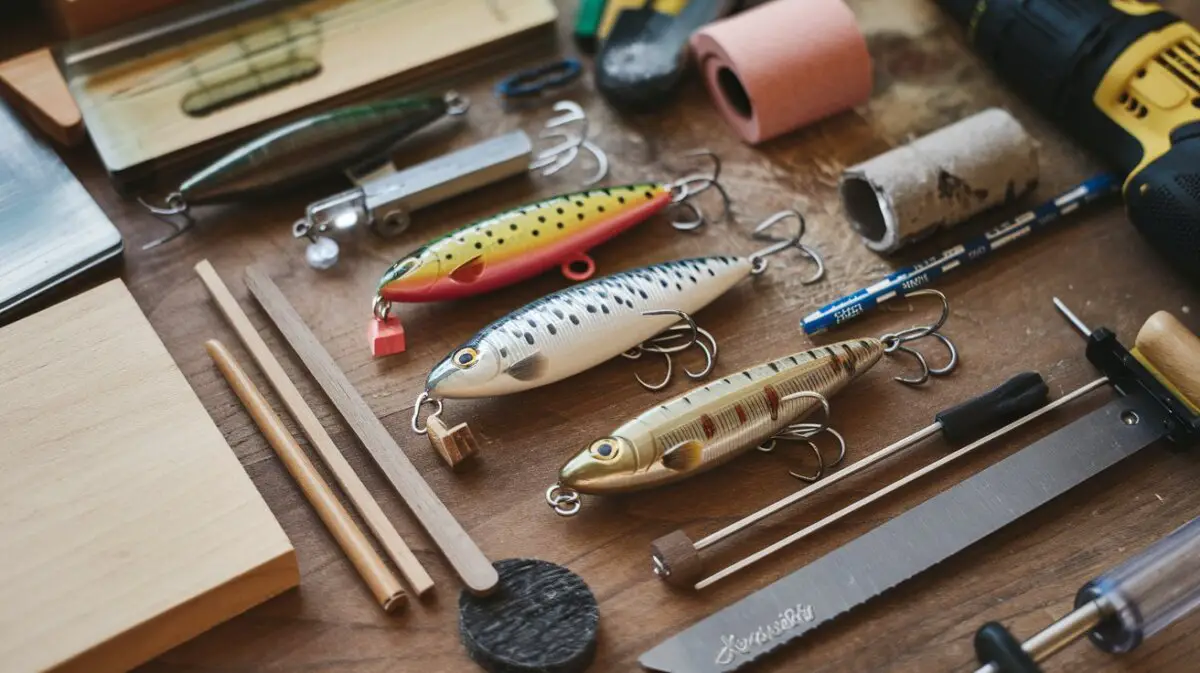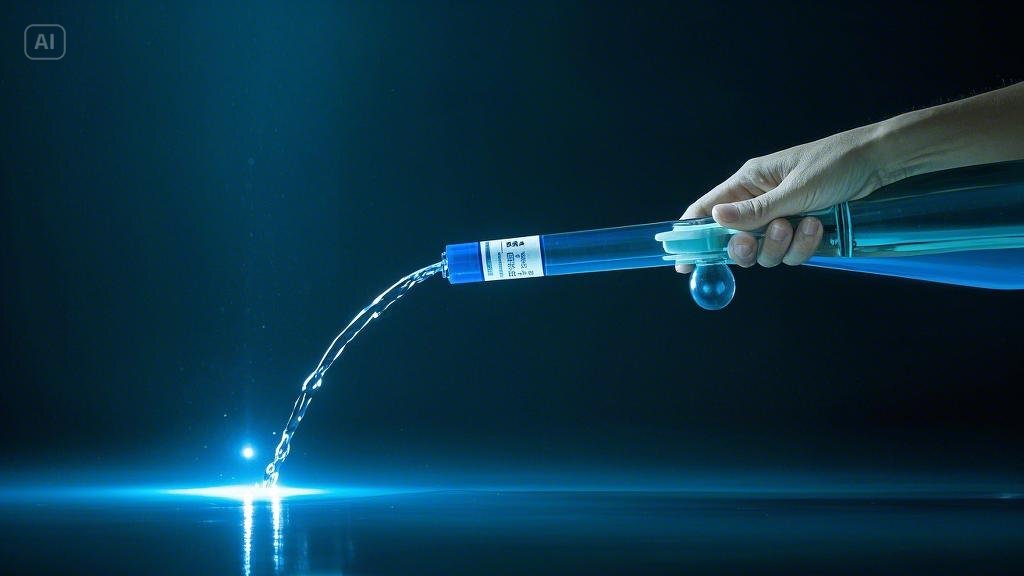Catch More Fish with Custom Lures, Custom lures are a great way to add a personal touch to your fishing experience. Making your own lures allows you to create unique designs that can attract fish in ways that store-bought lures cannot. Whether you are an experienced angler or just starting out, creating your own custom lures can be a fun and rewarding hobby.
In this beginner’s DIY kit guide, we will explore the process of making custom lures from start to finish, lure crafting, including choosing the right materials, step-by-step instructions, tips for designing and painting, testing and fine-tuning, techniques for using custom lures, and maintenance and storage DIY fishing lures tips.
Lure Crafting for Beginners: Custom Kits for Every Angler
Key Takeaways
- Custom lures can help you catch more fish by tailoring your bait to the specific fish you’re targeting.
- Choosing the right materials for your custom lures is crucial for their effectiveness and durability.
- Step-by-step instructions make it easy for beginners to create their own custom lures at home.
- Designing and painting your custom lures allows you to personalize them and make them more attractive to fish.
- Testing and fine-tuning your custom lures is essential for maximizing their effectiveness in catching fish.

Choosing the Right Materials for DIY Custom Lures
When it comes to making custom lures, choosing the right materials is crucial for creating effective and durable lures. The first step is to select the appropriate lure bodies, which can be made from a variety of materials such as wood, plastic, or metal. Wood is a popular choice for DIY lure makers due to its buoyancy and ease of carving, while plastic and metal offer durability and versatility.
Next, you will need to choose the right hooks, which come in various sizes and styles depending on the type of fish you are targeting. Additionally, selecting the right paint and finishes is essential for creating eye-catching designs that will attract fish. Acrylic paints are a popular choice for custom lures due to their durability and vibrant colors, while epoxy finishes provide a protective coating that can withstand the wear and tear of fishing.

Step-by-Step Instructions for Making Your Own Custom Lures
Now that you have chosen the right materials, it’s time to start making your own custom lures. The first step is to carve or shape the lure bodies to your desired shape using a carving knife or sandpaper. Once the bodies are shaped, you can then drill holes for the hooks and insert the hardware.
After the hardware is in place, it’s time to prime and paint the lure bodies with your chosen designs. Once the paint is dry, apply a protective epoxy finish to ensure the longevity of your custom lures. Finally, attach the hooks and any additional hardware, and your custom lures are ready for action.
Tips for Designing and Painting Custom Lures
| Lure Type | Number of Lures | Price |
|---|---|---|
| Spinnerbaits | 5 | 12.99 |
| Crankbaits | 3 | 8.99 |
| Soft Plastics | 10 | 14.99 |
| Jigs | 7 | 10.99 |
Designing and painting custom lures is where you can really let your creativity shine. When designing your custom lures, consider the type of fish you are targeting and the environment in which you will be fishing. Bright colors and flashy designs are often effective for attracting fish in murky waters, while more natural colors and patterns may be better suited for clear waters.
Additionally, consider adding eyes or other realistic features to your custom lures to make them more appealing to fish. When it comes to painting your custom lures, take your time and use high-quality acrylic paints for vibrant and long-lasting designs. Experiment with different patterns and color combinations to find what works best for the fish in your area.
Catch More Fish with Custom Lures

Testing and Fine-Tuning Your Custom Lures for Maximum Effectiveness
Once you have made your custom lures, it’s important to test them out and fine-tune them for maximum effectiveness. Take your custom lures out on the water and observe how they perform in different conditions. Pay attention to how they move through the water, how they attract fish, and how they hold up to the wear and tear of fishing.
If necessary, make adjustments to the weight, buoyancy, or hardware of your custom lures to improve their performance. Additionally, consider experimenting with different retrieval techniques to see how your custom lures respond to different movements in the water. By testing and fine-tuning your custom lures, you can ensure that they are as effective as possible when it comes time to catch fish.
Lure Crafting for Beginners: Custom Kits for Every Angler
Techniques for Using Custom Lures to Catch More Fish
Using custom lures effectively requires an understanding of different fishing techniques. Depending on the type of fish you are targeting and the environment in which you are fishing, different techniques may be more effective than others. For example, casting and retrieving is a common technique for using custom lures to catch fish in open water, while trolling may be more effective for covering larger areas of water.
Additionally, consider experimenting with different speeds and depths to see how fish respond to your custom lures. By understanding different fishing techniques and how they can be used with custom lures, you can increase your chances of catching more fish on your next fishing trip.

Maintenance and Storage Tips for DIY Custom Lures
After a successful day of fishing with your custom lures, it’s important to properly maintain and store them to ensure their longevity. Rinse off your custom lures with fresh water after each use to remove any salt or debris that may have accumulated. Additionally, inspect your custom lures for any signs of wear or damage, such as chipped paint or bent hooks, and make any necessary repairs before storing them.
When storing your custom lures, consider using tackle boxes or lure trays to keep them organized and protected from damage. By properly maintaining and storing your custom lures, you can ensure that they will continue to be effective tools for catching fish for years to come. In conclusion, making your own custom lures can be a fun and rewarding hobby that allows you to add a personal touch to your fishing experience.
By choosing the right materials, following step-by-step instructions, designing and painting with care, testing and fine-tuning for maximum effectiveness, using effective techniques, and properly maintaining and storing your custom lures, you can increase your chances of catching more fish on your next fishing trip. Whether you are an experienced angler or just starting out, creating your own custom lures is a great way to enhance your fishing experience and create lasting memories on the water.

Conclusion
In conclusion, embarking on the journey of creating your own custom fishing lures can be both an enjoyable and rewarding experience. As we’ve explored in “Catch More Fish with Custom Lures: A Beginner’s DIY Kit Guide,” the process not only allows you to tailor your lures to specific fishing conditions but also provides a deeper connection to the sport itself. By understanding the basics of lure crafting, selecting the right materials, and experimenting with different designs, you can enhance your fishing success and personal satisfaction.
Whether you’re a novice angler or someone looking to add a new dimension to your fishing hobby, custom lure making offers a unique blend of creativity and practicality. The skills you develop through this DIY approach can lead to more effective and personalized fishing gear, ultimately helping you catch more fish. So, gather your materials, follow the steps outlined in our guide, and start crafting lures that reflect your style and meet your fishing needs.
Thank you for joining us on this exploration of custom lure making. We hope “Catch More Fish with Custom Lures: A Beginner’s DIY Kit Guide” has provided you with valuable insights and inspiration to get started on your own lure-making adventure. Happy fishing!
Hooked on Tech: Exploring the latest Fishing Gadgets that Anglers swear by.
In the realm of angling, where tradition and technology often converge, a new wave of fishing gadgets has emerged, transforming the way anglers approach their craft.
From advanced fish finders to smart bait systems, these innovations have not only revolutionized the fishing experience but have also garnered a loyal following among anglers worldwide.

























